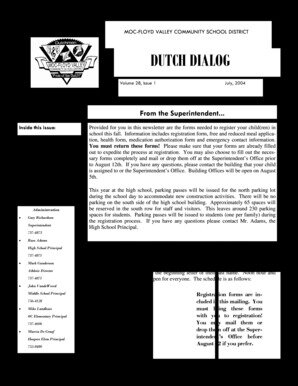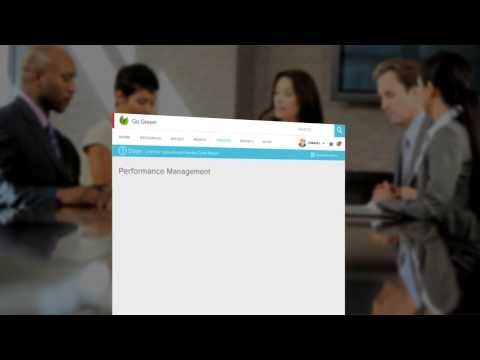Cares Act And Ffcra Provisions Expiring

Content

The FFCRA required covered employers to provide specified paid sick and family leave to employees affected by COVID-19, and provides affected employers with a corresponding employment tax credit. However, qualified FFCRA leave wage payments and associated tax credits may occur in 2021, if the FFCRA leave was taken in 2020. For example, an individual on qualified FFCRA leave in the last week of December may be paid for such leave in 2021.

Instead, borrowers will need only to demonstrate that they spent the loan proceeds on covered payroll (at least 60% of the forgiveness amount) and non-payroll costs. Borrowers can download the PPP Loan Forgiveness Payroll Costs report from their ADP system to submit to their lender with the 3508S form. My company previously laid off an employee, but later offered to rehire the employee. If the employee declined the rehire offer, will my PPP loan forgiveness amount still be reduced?
Expanded Sba Express Loans (section
The FFCRA leave payments related to the leave taken in 2020 still qualify for the associated FFCRA tax credit, which would be applied to 2021 employment tax liabilities and reported on IRS Form 941 for the quarter ended March 31, 2021. Aggregation rules apply in determining the number of employees of the employer. Wages may not include paid family and/or sick leave under the FFCRA or the Section 455 Paid Family and Medical Leave Credit for which a credit is taken. Additionally, employers may not claim the ERTC and the Work Opportunity Tax Credit for the same employee for the same period of time. In 2021, employers with 500 or fewer employees during 2019 may elect to receive an advance payment of the credit in an amount up to 70 percent of the average quarterly wages paid by the employer in 2019.
For wages paid from January 1, 2021 through June 30, 2021, the above thresholds increase to more than 500 full-time employees and 500 or fewer full-time employees, respectively. Additionally, the 30-day rule for employers with more than 500 full-time employees doesn’t apply to this period. If the eligible employer averaged 100 or fewer full-time employees in 2019, qualified wages are the wages paid to any employee during any period of economic hardship described above. If less than 60 percent of loan is used on payroll costs, the amount of loan forgiveness may be reduced proportionately and may need to be repaid. What happens if I use less than 60 percent of the PPP loan on payroll costs?
- He reviews these reports, along with how to navigate payroll earnings codes in response to FFCRA, and more.
- With thousands of small business owners searching for much needed funding to retain and pay their employees, it is more important than ever to understand how the CARES Act, Paycheck Protection Program and Families First Coronavirus Response Act all interact with each other.
- To help quickly gather the information you need to apply for these loans, payroll & HR providers like ADP® have updated their solutions by creating PPP reports to help determine business eligibility and maximum loan amount.
- To obtain full forgiveness, loan proceeds must be spent within the 8- to 24-week period immediately following disbursement of the loan.
- Check out this webinar recording presented by Matthew Fulton of Parkway Business Solutions as he explains the requirements to apply for an SBA loan and what reporting will be necessary to maximize your potential loan forgiveness.
If you are applying for a second PPP loan, remember to run new PPP loan application reports from your ADP system. The ADP reports are updated frequently to reflect the latest government guidance. You should always run the applicable PPP report as close in time to submitting your PPP loan application as possible. For your reference, click here for application form provided by the SBA.
Many borrowers who received PPP loans have already completed their specified “covered period” and spent the PPP loan proceeds, and may be ready to submit the related forgiveness applications . ADP clients can obtain the appropriate reports in their ADP solution and should gather other documentation demonstrating how PPP loan proceeds were used, including mortgage interest, rent payments and utilities. Section 1102 of the CARES Act established the Paycheck Protection Program , which was intended to provide employers with funds to continue operations and payment of wages during the COVID-19 pandemic. PPP loans are 100 percent forgivable if certain measures are met, such as spending at least 60 percent of the proceeds on payroll costs and maintaining specified staffing and wage levels. Section 2301 of the CARES Act provided that private-sector employers may receive a refundable tax credit against employer Social Security tax equal to 50 percent of qualifying wages paid, up to $10,000 per employee, for a maximum credit of $5,000 per employee. However, the credit is not available to employers who receive a Paycheck Protection Program (“PPP”) loan . To qualify, an employer’s operation must have been at least partially suspended due to orders from a governmental authority limiting commerce, travel, or meetings due to COVID-19, or the employer must have experienced a 50 percent decline in gross receipts when compared to the same quarter of the prior year.
Payroll costs are considered incurred on the day that the employee’s pay is earned. Payroll costs incurred but not paid within the Covered Period or Alternative Payroll Covered Period must be paid by the next regular payroll date to be counted for forgiveness purposes. For borrowers who are interested in applying for forgiveness now, the Treasury Department and SBA previously issued a Loan Forgiveness Application Form, an “EZ” version of the Loan Forgiveness Application, and instructions for each, all of which are available here. Additionally, borrowers who previously received loans of $50,000 or less may be exempt from reductions in loan forgiveness amounts based on reductions of full-time equivalent employees or in salaries or wages. If eligible, borrowers would use the SBA Form 3508S, or their lender’s equivalent form, to submit their loan forgiveness application.
Adp Earns 2020 Tech Cares Award From Trustradius For Unwavering Service And Support Amid Global Health Event
If you pay your employees on a biweekly or more frequent schedule, you may choose to begin the covered period on the first day of the first pay period following disbursement of the loan (“Alternative Payroll Covered Period”) for qualifying payroll costs only. + To obtain full forgiveness, loan proceeds must be spent during the Covered Period or Alternative Payroll Covered Period. To obtain full forgiveness, loan proceeds must be spent within 8 to 24 weeks immediately following disbursement of the loan, whichever is earlier. If you pay your employees on a biweekly or more frequent schedule, you may choose to use the Alternative Payroll Covered Period and begin the covered period on the first day of the first pay period following disbursement of the loan for qualifying payroll costs only. Spend the loan proceeds, or incur qualifying costs, within applicable Covered Period or Alternative Payroll Covered Period. To obtain full forgiveness, loan proceeds must be spent within to the 8- to 24 week period immediately following disbursement of the loan . How will the determination of whether my business has maintained staffing levels be made?
The new round of PPP funding includes other important changes to the PPP loan forgiveness process, some of which may apply to loans issued previously in 2020. ADP is actively evaluating these changes and will update the guidance below and in the PPP Loan Forgiveness Reports as additional guidance is issued by the Treasury Department and Small Business Administration. For example, the CAA 2021 provides that the SBA will issue a streamlined forgiveness application form for loans of $150,000 or less. This one-page form would require borrowers to certify certain information related to loan forgiveness, list the amount of the loan, number of employees retained and estimated amount of the loan spent on payroll costs.

For instance, if the employer had 20 FTEEs from February 15 through June 30, 2019 and 18 FTEEs from January through February 2020, the borrower would most likely choose the latter time period since it may be more advantageous to use the lower FTEE number for the chose lookback period. If the number of FTEEs during the Covered Period or Alternative Payroll Covered Period is lower than the time period chosen, the amount of loan forgiveness may be reduced proportionately. Yes, the amount of the loan can be fully forgiven as long as certain conditions are met. The specific amount will generally depend in part on what portion of the loan is used on eligible payroll costs and whether the employer has maintained staffing and pay levels during the covered period. The 3508S form eliminates the need for borrowers to demonstrate that they maintained wage and employment levels during the applicable covered period.
Adp Accountant Connect®
Repayment of the corresponding portion of the loan may be required if an employee’s earnings are reduced by more than 25% during the Covered Period or Alternative Payroll Covered Period compared to the period of January 1 through March 31, 2020. The Safe Harbor period ends on December 31, 2020 for borrowers who received their PPP loan prior to August 8, 2020, and on the last day of the chosen covered period for borrowers who received their PPP loan or Second Draw PPP loan in or after December 2020. If the pay reduction was made outside the February 15 to April 26 timeframe, the forgivable amount may still be reduced even if the pay reduction is later reversed.
To determine whether staffing levels have been maintained, the average number of full-time equivalent employees during the applicable Covered Period or Alternative Payroll Covered Period will be compared to one of two time periods. Borrowers may either use the period from February 15 through June 30, 2019 or January 1 through February 29, 2020.

I used payroll cost and headcount reports for the PPP loan application. Can I use the same reports for purposes of loan forgiveness reporting? No, the ADP payroll cost and headcount reports that were developed to support PPP loan applications cannot be used for PPP loan forgiveness purposes. ADP has reports available to support clients that are navigating the forgiveness process. See below for more information about PPP loan forgiveness reports that are available. When calculating the amount of loan forgiveness, how will the determination of whether my business has maintained pay levels be made? Repayment of part of the loan may be required if an employee’s average annual salary or average hourly rate are reduced by 25% or more during the applicable Covered Period or Alternative Payroll Covered Period compared to the period of January 1 though March 31, 2020 .
With thousands of small business owners searching for much needed funding to retain and pay their employees, it is more important than ever to understand how the CARES Act, Paycheck Protection Program and Families First Coronavirus Response Act all interact with each other. Check out this webinar recording presented by Matthew Fulton of Parkway Business Solutions as he explains the requirements to apply for an SBA loan and what reporting will be necessary to maximize your potential loan forgiveness. To help quickly gather the information you need to apply for these loans, payroll & HR providers like ADP® have updated their solutions by creating PPP reports to help determine business eligibility and maximum loan amount. He reviews these reports, along with how to navigate payroll earnings codes in response to FFCRA, and more. What is the period within which I must spend my loan proceeds to obtain full loan forgiveness? To obtain full forgiveness, loan proceeds must be spent within the 8- to 24-week period immediately following disbursement of the loan.
Cares Act And Ffcra Provisions Expiring: May Require Action
Borrowers would be required to retain – but not submit – documents substantiated their forgiveness application for 4 years for employment records and 3 years for other records. For wages paid from January 1, 2021 through June 30, 2021, the credit equals 70 percent of the qualified wages that an eligible employer pays in a calendar quarter. The cap on wages taken into account also increases to $10,000 per calendar quarter. Therefore, the employer’s maximum credit for qualified wages paid to any employee is $14,000 for this time period. The CARES Act expands the allowable uses for loans under this program to permit payroll support, including paid sick leave, supply chain disruptions, employee salaries, mortgage payments and other debt obligations, to provide immediate access to funds for affected small businesses.
The CARES Act increases the maximum loan amount for SBA Express loans from $350,000 to $1,000,000, until December 31, 2020. The CARES Act also reduces the cost of participation in the program by providing fee waivers, an automatic deferment of payments for up to one year, and no prepayment penalties. in an amount equal to the sum of such costs incurred or payments made during the 24 weeks after loan disbursement, if employers meet certain requirements, including maintaining employment and wage levels. Additionally, businesses that previously received a PPP loan may also be able to receive a second PPP loan if they have 300 or fewer employees and meet other eligibility requirements.
ADP has put together a Loan Forgiveness Checkup which outlines important steps to take before year-end to maximize loan forgiveness. In addition, the COVID-19 relief law passed by Congress in December 2020 provides that the forgiven portion of a PPP loan can be excluded from gross income. Borrowers have 10 months from the end of their covered period to apply for forgiveness before they would need to start paying back any portion of their loan. You will need to complete the PPP loan application, which your lender will provide, and submit the application with your payroll documentation.
Other Employee Reviews
The Paycheck Protection Program Flexibility Act provides that at least 60% of the covered loan amount must be used for payroll costs. If less than 60% of the loan amount is used on payroll costs, the amount of the loan that is forgiven may be reduced. The Treasury Department has indicated that at least 60% of the loan forgiveness amount must have been used for payroll costs. Do all payroll costs need to be paid within the Covered Period or Alternative Payroll Covered Period? The latest guidance from the government indicates that borrows are eligible for forgiveness for payroll costs paid and payroll costs incurred, but not yet paid, during the Covered Period or Alternative Payroll Covered Period. Payroll costs are considered paid on the date of distribution of paychecks or origination of an ACH credit transaction.


